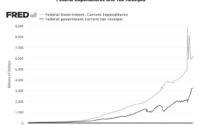Jay Powell struggles to explain ‘hawkish pause’ to sceptical economists
When the Federal Reserve announced its first reprieve in an aggressive 15- month-long campaign of interest rate rises on Wednesday, there was a sting in the tail.
As widely expected, the US central bank held its benchmark rate steady after 10 consecutive interest rate increases. But it also signalled it would need to squeeze the world’s largest economy much more before the year is out in order to get a handle on stubbornly high inflation.
Rather than raising rates just once more by a quarter point, as had been widely anticipated, most officials are now forecasting there will have to be two such increases this year, according to the so-called “dot plot” of their projections that accompanied the rate move.
The incongruence of the decision — a pause accompanied by an even more hawkish stance — prompted Fed chair Jay Powell to launch a staunch defence of the US central bank’s approach that left some economists unconvinced.
“It seemed to us to make obvious sense to moderate our rate hikes as we got closer to our destination,” Powell explained during a press conference on Wednesday as reporters peppered him with questions about the apparent contradiction.
Moving more gingerly would not only give the Fed more time to assess future economic data and the damage done by the recent regional banking crisis, argued Powell. It would also allow policymakers to gauge the effect of the rapid monetary tightening enacted since last March, which may not yet be showing up fully in the real economy.
However, Vincent Reinhart, who worked at the Fed for more than 20 years and is now at Dreyfus and Mellon, described Wednesday’s move as “a policy mistake wrapped in a communication error”.
The Fed’s policy mistake, said Reinhart, was a failure to respond to a string of strong economic reports since the last meeting in May despite an oft-repeated pledge to be “data dependent”.
The communication error, he added, was to seed expectations for a pause some five weeks ago, a move that left it reluctant to adapt “to changed circumstances”.

According to the latest dot plot, most officials are now projecting the federal funds rate will peak at a new target range of 5.5-5.75 per cent, half a percentage point higher than when comparable forecasts were published in March.
“They can’t sell it as a prudential delay of policy to await more information when the information you got led you to revise up your forecast [half a percentage point],” said Reinhart.
Some economists detected signs of growing division among Fed policymakers in the topsy-turvy messaging.
In the run-up to this week’s meeting, faultlines had emerged between officials over how much more pain to inflict on borrowers. Those advocating for a more cautious approach cited the possibility that the cumulative effect of the Fed’s tightening had yet to show up. That could result in unnecessary pain for an economy that, on the face of it, still seems to be remarkably resilient.
The hawkish cohort, meanwhile, pointed to scant progress in stamping out “core” inflation, which strips out volatile food and energy costs.
“To us, this looks like a meeting where the committee was split, everybody got something, and nobody got everything,” concluded economists at LH Meyer, a research firm.
Tiffany Wilding, chief US economist at Pimco, guessed that the unanimous vote to pause on Wednesday had been the result of this “horse-trading”.
The compromise that now appears to be on the table is for the Fed to raise rates potentially as soon at its meeting at the end of July. Powell on Wednesday sent a strong hint that this might happen when he said the gathering next month would be a “live one”.
By then, said Powell, the Fed could take stock of three months of economic data as well as the “evolving risk picture”. At one point, he described the move as a “skip” before correcting himself: “I shouldn’t call it a ‘skip’ — the ‘decision’.”
That only fuelled more questions over why the Fed was holding back, especially after the economic projections released on Wednesday showed officials had become decidedly more negative on the inflation outlook and more bullish on economic growth and the labour market.
“If July is already live, it does raise the question [of] why do you even stop if you’re willing to immediately say we are going to go back?” asked Jean Boivin, the former deputy governor of the Bank of Canada who is now head of the BlackRock Investment Institute.
Dean Maki, chief US economist at Point72 Asset Management, cautioned the data ahead of the July meeting was unlikely to alleviate Fed hawks’ concerns, warning that “tension” among officials would likely persist before the central bank eventually implemented another rate rise next month.
Wilding said she also expects the Fed to raise the benchmark rate then but admitted she is sceptical the central bank will follow through on the second increase, an assumption based on her forecast that the economy will soon slow down more decisively.
She added the risks of the central bank overdoing it have risen as the end point of the tightening campaign has been steadily pushed out and revised higher.
“That destination at some point needs to stop being a moving target [because] monetary policy works through lags and you run the risk of figuring out later on that you did too much” she said.
“Then monetary policy all of a sudden just seems way too tight.”
[ad_2]
Source link

